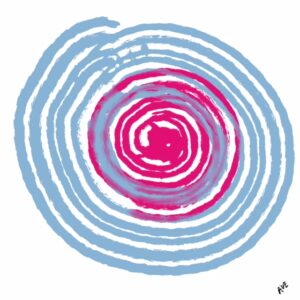
An executive coaching client reported, “I realize that I am closed to some people and situations, and I am beginning to see how this may be limiting my effectiveness and influence.”
I celebrated this insight that marked a profound turning point on his transformative journey that ultimately made a difference for him, his family, and his organization.
He heard me say that taking an Open Stance is a critical skill that:
– Supports our inner development and growth so that we can be the best version of ourselves with more meaning and fulfillment
– Enables positive and productive relationships
– Allows us to manage stress and be more confident in uncertainty, and influence our environment and communities
– Shifting toward an Open Stance fosters greater awareness, adaptability, and effectiveness.
He asked me if I believed he could actually be open more often. In fact, it is a physiological imperative that we protect ourselves and survive. We naturally shift from open to closed when we perceive potential risk or danger. This is a natural built-in process. We need to respect our natural propensity. Often we close without conscious awareness. Our autonomic system shifts into a sympathetic state in the face of danger and we experience contraction and close with a fight or flight reaction.
While this mechanism serves us, we often close or contract when there is no real danger. We can learn to be aware of bodily cues when contracting, reacting, or closing. With this awareness, we can assess whether we are safe enough. When we are unsafe, our body reacts, and energy is diverted from maintenance functions to enable us to fight, flee, or close down in a frozen state.
Many of us have built the habit of staying in a revved-up state of stress, and we are quick to react. Mammals in the wild react when a predator is nearby. When the danger recedes, they shake off the stress and return to a calmer, open state. Some of us have forgotten how to return more often and quickly to what I call an Open Stance; others have called it the tend and befriend and parasympathetic state.
When we learn how to notice our somatic cues, we can more consciously assess our situations and shift into an Open Stance. With intention, we can be more aware of the felt sense of being open and engage in simple practices that support us in being available. We can become more aware of how it serves us and others in our interactions when we are present and open to what is emerging and possible.
I told my client that it is quite natural for us to close, and we need to respect our systems and that of others since our bodies are doing what they learned to keep us safe. At the same time, with curiosity, we can explore and experiment and learn new ways of being with ourselves, others, and our worlds.
As my client embraced the journey towards the Open Stance, he was less reactive and more responsive in his interactions. By becoming attuned to his internal cues, he navigated challenges with greater ease, leading to a newfound sense of adaptability and effectiveness. As he cultivated an Open Stance, others noticed the positive shift, describing him as a much more impactful and influential leader.
By nurturing curiosity and exploring new ways of being, we open ourselves to a world of possibilities, creating a ripple effect of positive change in our interactions and leadership. May you embark on this journey of discovery, embracing the Open Stance to unlock your true potential and impact those around you.
